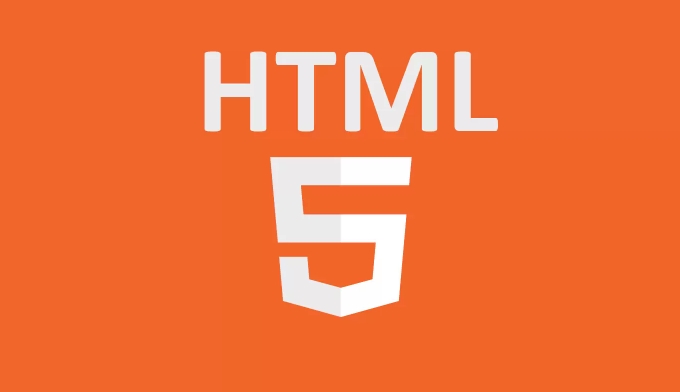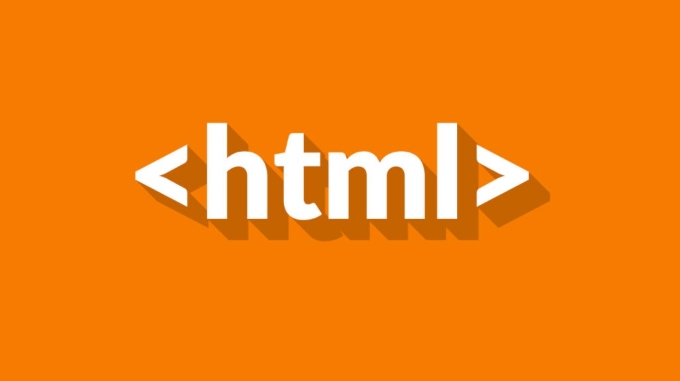Use the <s> tag for text that is no longer accurate or relevant, such as outdated prices or deprecated information, as it indicates generic strikethrough without implying deletion. 2. Use the <del> tag for text that has been intentionally removed from a document, as it conveys semantic meaning of deletion, supports attributes like datetime and cite for revision tracking, and is interpreted as "deleted" by screen readers, making it ideal for edits, corrections, and collaborative or legal documents where changes matter.

The <s></s> and <del></del> HTML tags both render text with a horizontal line through it (strikethrough), but they have different semantic meanings, even though they often look the same visually.
 and <del>?" />
and <del>?" />1. <s></s> – Generic Strikethrough for No Longer Accurate
The <s></s> tag is used to represent content that is no longer correct, relevant, or accurate, but you still want to show it. It’s purely presentational in meaning and doesn’t imply that the text was deleted in a document.
Example:
 and <del>?" />
and <del>?" /><p>Recommended retail price: <s>$49.99</s> $39.99</p>
Here, the original price is crossed out because it’s no longer valid — it’s a price update, not a deletion.
? Think of
<s>like marking something outdated — e.g., old prices, deprecated info.and <del>?" />
2. <del> – Deleted Text with Document Revision Meaning
The <del> tag represents text that has been deliberately removed from a document. It carries semantic meaning: this content was deleted, possibly as part of an edit or revision. Browsers usually style it the same as <s>, but assistive technologies may treat it differently (e.g., screen readers might say “deleted”).
Example:
<p>The meeting is scheduled for <del>Monday</del> Tuesday.</p>
This shows that "Monday" was removed and replaced — it's a correction or change in plans.
You can also use the datetime and cite attributes with <del> to provide more context:
<del datetime="2025-04-05T12:00:00Z" cite="edit-log.html"> This sentence was removed during review. </del>
? Use
<del></del>when tracking changes, like in legal documents, articles with edits, or collaborative writing.
Key Differences Summary
| Feature | <s></s> |
<del></del> |
|---|---|---|
| Meaning | No longer accurate/relevant | Content was deleted |
| Semantic weight | Low (stylistic) | High (document change) |
| Accessibility | Usually read as plain text | Screen readers may announce “deleted” |
| Attributes | None | Supports datetime, cite
|
| Best for | Prices, outdated info | Revisions, edits, corrections |
When to Use Which?
- ? Use
<s></s>for out-of-date info (e.g., sale prices, obsolete facts). - ? Use
<del></del>when showing text that was removed in a document (especially with<ins></ins>for insertions).
Also, note that <s></s> was redefined in HTML5 — it used to be for "strike" (deprecated in HTML 4), but now has a clearer purpose.
So while they look the same, use <del></del> for deletions in content flow, and <s></s> for stylistic strike-through of outdated text.
Basically: same style, different meaning.
The above is the detailed content of What is the difference between and ?. For more information, please follow other related articles on the PHP Chinese website!

Hot AI Tools

Undress AI Tool
Undress images for free

Undresser.AI Undress
AI-powered app for creating realistic nude photos

AI Clothes Remover
Online AI tool for removing clothes from photos.

Clothoff.io
AI clothes remover

Video Face Swap
Swap faces in any video effortlessly with our completely free AI face swap tool!

Hot Article

Hot Tools

Notepad++7.3.1
Easy-to-use and free code editor

SublimeText3 Chinese version
Chinese version, very easy to use

Zend Studio 13.0.1
Powerful PHP integrated development environment

Dreamweaver CS6
Visual web development tools

SublimeText3 Mac version
God-level code editing software (SublimeText3)

Hot Topics
 What are the differences and use cases for html textarea and input type text?
Jul 12, 2025 am 02:48 AM
What are the differences and use cases for html textarea and input type text?
Jul 12, 2025 am 02:48 AM
The main difference is that textarea supports multiple lines of text input, while inputtext is only available in a single line. 1. Use inputtype="text" to be suitable for short and single-line user input, such as username, email address, etc., and can set maxlength to limit the number of characters. The browser provides automatic filling function, making it easier to uniformly style across browsers; 2. Use textarea for scenarios that require multiple lines of input, such as comment boxes, feedback forms, support line breaks and paragraphs, and can control the size through CSS or disable the adjustment function. Both support form features such as placeholders and required fills, but textarea defines the size through rows and cols, and input uses the size attribute.
 The `` vs. `` in HTML
Jul 19, 2025 am 12:41 AM
The `` vs. `` in HTML
Jul 19, 2025 am 12:41 AM
It is a block-level element, used to divide large block content areas; it is an inline element, suitable for wrapping small segments of text or content fragments. The specific differences are as follows: 1. Exclusively occupy a row, width and height, inner and outer margins can be set, which are often used in layout structures such as headers, sidebars, etc.; 2. Do not wrap lines, only occupy the content width, and are used for local style control such as discoloration, bolding, etc.; 3. In terms of usage scenarios, it is suitable for the layout and structure organization of the overall area, and is used for small-scale style adjustments that do not affect the overall layout; 4. When nesting, it can contain any elements, and block-level elements should not be nested inside.
 Structuring Content with HTML Headings and Paragraphs
Jul 12, 2025 am 02:44 AM
Structuring Content with HTML Headings and Paragraphs
Jul 12, 2025 am 02:44 AM
When writing web content, you need to pay attention to the title and paragraph structure to improve the reading experience and SEO effect. 1. The title level should be clear. A page should only use one h1 as the main title, h2 as the title of the big section, and h3 subdivides the subsections to avoid multiple h1, skip grades or keyword piles up; 2. The paragraph should be controlled in three to four lines, and the key points should be directly mentioned at the beginning, and if necessary, use the ul list to enhance readability; 3. Appropriately use the subtitles of h2 and h3 to guide readers' attention, facilitate information search and optimize search engine recognition.
 Specifying Character Encoding for HTML Documents (UTF-8)
Jul 15, 2025 am 01:43 AM
Specifying Character Encoding for HTML Documents (UTF-8)
Jul 15, 2025 am 01:43 AM
To correctly set the character encoding of the HTML document to UTF-8, you need to follow three steps: 1. Add at the top of the HTML5 part; 2. Configure the response header Content-Type: text/html; charset=UTF-8, if Apache uses AddDefaultCharsetUTF-8, Nginx uses charsetutf-8; 3. Select the UTF-8 encoding format when saving HTML files in the editor. These three links are indispensable, otherwise it may lead to garbled page code and failure of special character parsing, affecting user experience and SEO effect. It is important to ensure that HTML declaration, server configuration and file saving are consistent.
 Essential HTML Tags for Beginners
Jul 27, 2025 am 03:45 AM
Essential HTML Tags for Beginners
Jul 27, 2025 am 03:45 AM
To get started with HTML quickly, you only need to master a few basic tags to build a web skeleton. 1. The page structure is essential, and, which is the root element, contains meta information, and is the content display area. 2. Use the title. The higher the level, the smaller the number. Use tags to segment the text to avoid skipping the level. 3. The link uses tags and matches the href attributes, and the image uses tags and contains src and alt attributes. 4. The list is divided into unordered lists and ordered lists. Each entry is represented and must be nested in the list. 5. Beginners don’t have to force memorize all tags. It is more efficient to write and check them while you are writing. Master the structure, text, links, pictures and lists to create basic web pages.
 Shadow DOM Concepts and HTML Integration
Jul 24, 2025 am 01:39 AM
Shadow DOM Concepts and HTML Integration
Jul 24, 2025 am 01:39 AM
ShadowDOM is a technology used in web component technology to create isolated DOM subtrees. 1. It allows the mount of an independent DOM structure on ordinary HTML elements, with its own styles and behaviors, and does not affect the main document; 2. Created through JavaScript, such as using the attachShadow method and setting the mode to open; 3. When used in combination with HTML, it has three major features: clear structure, style isolation and content projection (slot); 4. Notes include complex debugging, style scope control, performance overhead and framework compatibility issues. In short, ShadowDOM provides native encapsulation capabilities for building reusable and non-polluting UI components.
 Can you put a tag inside another tag?
Jul 27, 2025 am 04:15 AM
Can you put a tag inside another tag?
Jul 27, 2025 am 04:15 AM
?Youcannotnesttagsinsideanothertagbecauseit’sinvalidHTML;browsersautomaticallyclosethefirstbeforeopeningthenext,resultinginseparateparagraphs.?Instead,useinlineelementslike,,orforstylingwithinaparagraph,orblockcontainerslikeortogroupmultipleparagraph
 Why is my image not showing up in HTML?
Jul 28, 2025 am 02:08 AM
Why is my image not showing up in HTML?
Jul 28, 2025 am 02:08 AM
Image not displayed is usually caused by a wrong file path, incorrect file name or extension, HTML syntax issues, or browser cache. 1. Make sure that the src path is consistent with the actual location of the file and use the correct relative path; 2. Check whether the file name case and extension match exactly, and verify whether the image can be loaded by directly entering the URL; 3. Check whether the img tag syntax is correct, ensure that there are no redundant characters and the alt attribute value is appropriate; 4. Try to force refresh the page, clear the cache, or use incognito mode to eliminate cache interference. Troubleshooting in this order can solve most HTML image display problems.




 and <del>?" />
and <del>?" />

